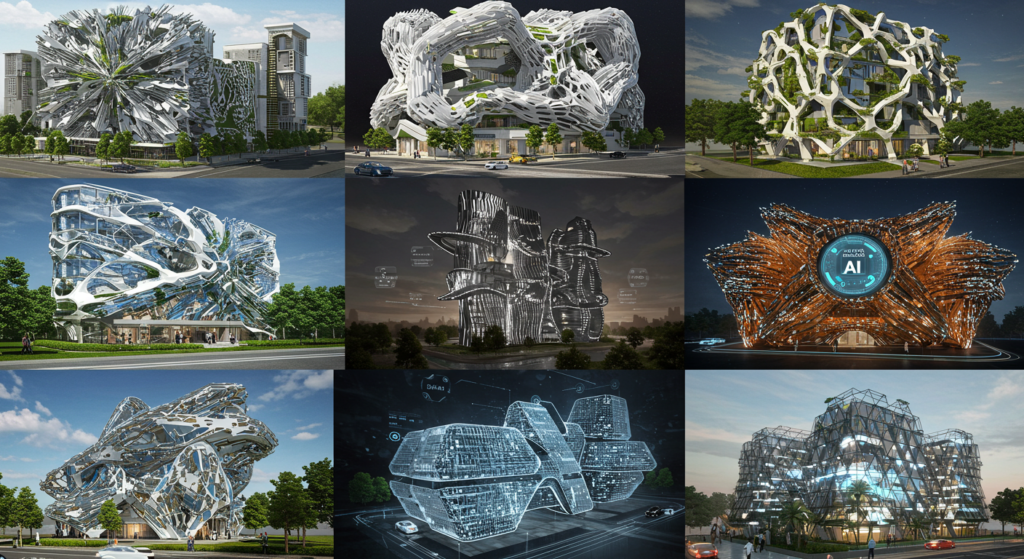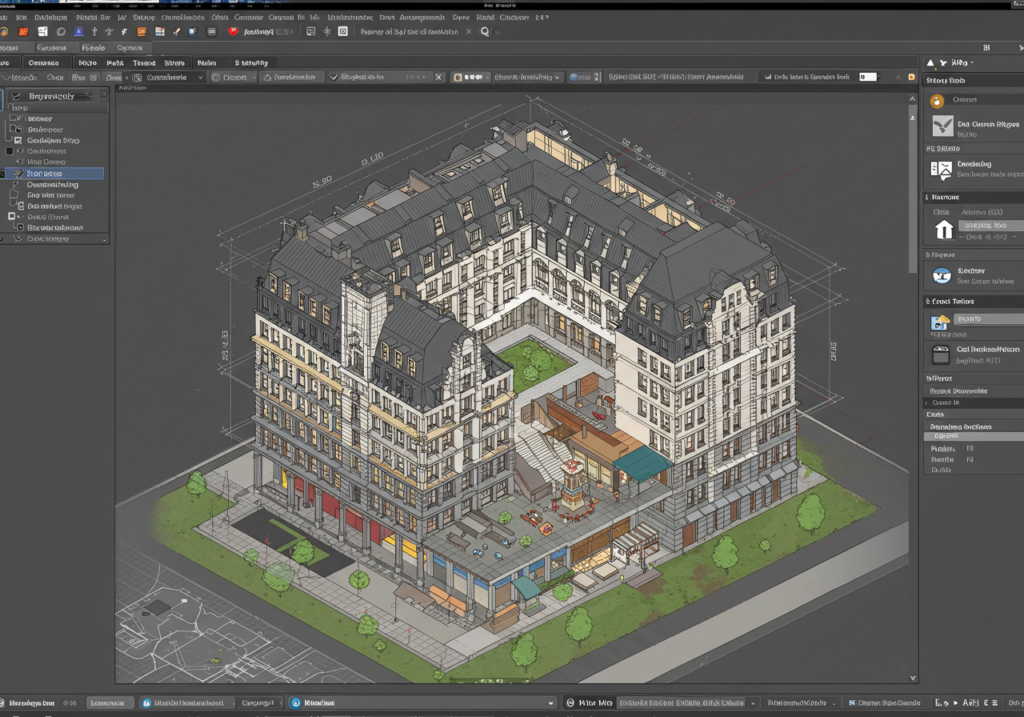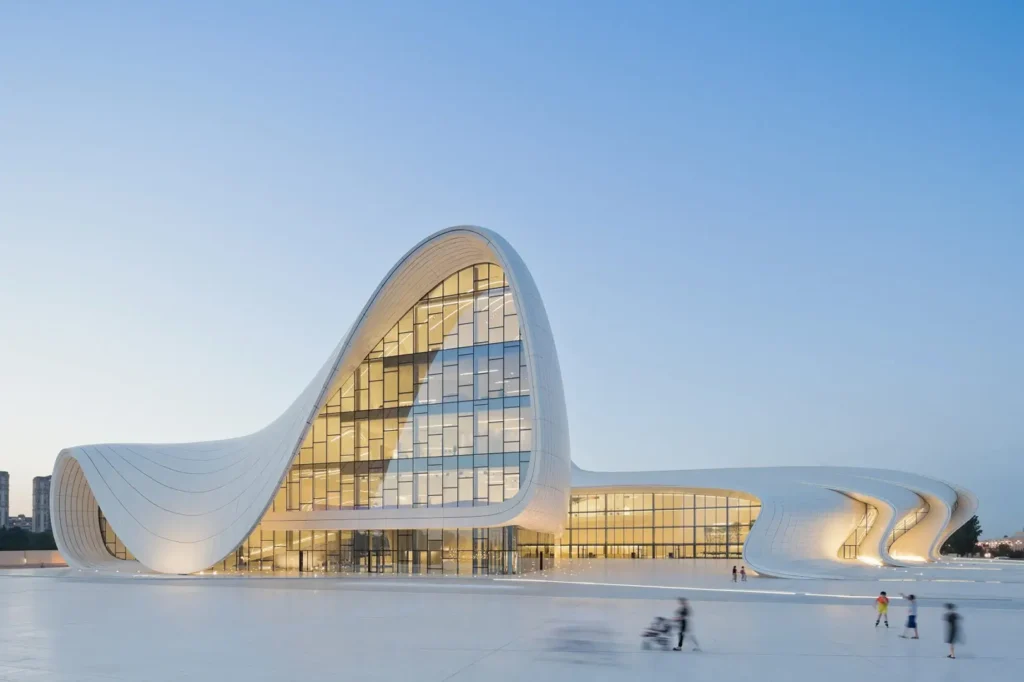Revolutionizing Design, Construction, and Sustainability

Artificial Intelligence (AI) is making waves across industries, transforming how we live, work, and create. One of the sectors experiencing a profound change due to AI is architecture. From conceptual design to the construction process, AI is revolutionizing every aspect of the architectural field. This blog will delve into the impact of AI on architecture, exploring how it enhances design capabilities, optimizes construction, and contributes to sustainable building practices.
1. Introduction: AI in Architecture
The architecture profession has long been at the intersection of creativity, mathematics, and technology. While architects have used computer-aided design (CAD) software since the 1980s, the introduction of artificial intelligence (AI) is pushing the boundaries of what’s possible in architecture. AI offers a unique set of tools that help architects make data-driven decisions, accelerate design processes, and explore new forms of creativity that weren’t possible before.
Artificial intelligence, in simple terms, refers to machines capable of simulating human intelligence, particularly in problem-solving and learning. In architecture, AI algorithms analyze data, make design recommendations, and even optimize building functions. The Impact of Artificial Intelligence on Architecture remains in the capability that allows architects to design more efficiently, reduce errors, and produce cutting-edge structures. Over time, AI has evolved from simple drafting tools into intelligent systems capable of performing complex tasks, such as generative design, predictive modeling, and energy efficiency optimization.
You can also generate visuals and videos using those tools :
1- PromeIA
2- HeyGen
3- Elai
4- Fliki
The Historical Context
AI’s journey in architecture started modestly, primarily with algorithmic thinking and computational designs in the 1990s. But the real breakthrough came when architects began using machine learning algorithms for parametric designs, which involved automating tasks and optimizing parameters that influence a building’s shape and structure. Now, AI’s application in architecture is expanding into multiple domains, including urban planning, sustainability, and construction management.
Today, AI is helping architects to do more than visualize; it allows them to predict outcomes, generate innovative forms, and significantly reduce the time from concept to realization.
2. AI in the Design Process
One of the most exciting areas where we clearly see the impact of artificial intelligence on architecture making a difference is the design process. Traditionally, architects have relied on manual sketches, models, and drafting software to bring their ideas to life. With AI, these processes are now becoming more efficient, iterative, and intelligent.
Parametric Design and AI Algorithms
AI introduces parametric design, where algorithms generate and modify designs based on specified parameters. By setting constraints, architects can input the desired outcome, and AI can produce numerous iterations that comply with these specifications. This process not only speeds up design but also introduces forms and structures that may not have been considered using traditional methods.
For instance, AI can optimize designs by analyzing how factors such as sunlight, airflow, and thermal properties affect the building. This leads to the creation of more efficient, aesthetically unique, and environmentally friendly structures.
Creativity and Innovation
Contrary to the fear that AI could stifle creativity, the integration of AI into architecture often amplifies human creativity. AI-assisted tools can generate unexpected design solutions, push the boundaries of traditional aesthetics, and inspire architects to explore unconventional ideas. These generative design tools enable architects to experiment with complex geometries, unique materials, and non-linear forms.
Case Study: Zaha Hadid Architects
Zaha Hadid Architects, known for their futuristic and fluid designs, have been pioneers in using AI to assist in design processes. Their AI-driven models help generate thousands of design variations, allowing architects to evaluate which design best meets both aesthetic and functional requirements. Their projects, such as the Al Janoub Stadium in Qatar, showcase how AI-generated designs can achieve a perfect balance between form and functionality.
3. AI in Construction and Project Management
AI doesn’t just improve architectural designs—it also transforms the construction process. Construction is traditionally a labor-intensive and time-consuming endeavor, prone to human error. AI is streamlining this process with robotics, automation, and enhanced project management tools.
Robotics and Automation in Construction
AI-powered robots are now being used in construction to perform repetitive tasks such as bricklaying, painting, and welding. These robots can work faster and more accurately than human workers, ensuring precision and reducing labor costs. For instance, construction robots can assemble modular buildings in a fraction of the time it would take traditional crews, without sacrificing quality.
AI-Driven Project Management Tools
In addition to physical labor, AI also optimizes project management. AI-powered software can track and analyze construction timelines, predict delays, and recommend adjustments to stay on schedule. Moreover, AI systems can help coordinate between different contractors, monitor inventory, and ensure that projects remain within budget.
Minimizing Human Error and Enhancing Safety
Construction sites are notorious for accidents and human error, which can lead to delays and cost overruns. AI is playing a critical role in improving safety by predicting potential hazards, monitoring worker activity through wearables, and providing real-time feedback to site managers. This not only reduces accidents but also improves overall efficiency and worker well-being.
4. Sustainability and Smart Buildings
AI is a powerful tool in driving sustainability and promoting eco-friendly architectural practices. From smart buildings to energy-efficient designs, AI helps reduce the environmental impact of architecture.
AI and Eco-Friendly Designs
Architects can now use AI to create environmentally sustainable designs by analyzing how materials, orientation, and climate impact the overall energy efficiency of a building. AI models can simulate different scenarios to identify the most sustainable construction techniques, ensuring minimal waste and reduced energy consumption.
AI in Smart Buildings
Smart buildings are structures that use AI-driven systems to manage energy, monitor environmental conditions, and optimize operations. These buildings often use sensors and AI algorithms to automatically adjust lighting, heating, and ventilation based on occupancy and real-time data.
For example, AI-powered HVAC (heating, ventilation, and air conditioning) systems can reduce energy consumption by learning user habits and adjusting accordingly. This ensures a comfortable indoor environment while cutting energy waste and operational costs.
Reducing Carbon Footprints
As cities look to reduce their carbon footprints, AI is playing a key role in promoting sustainability. AI can optimize urban layouts, suggest low-carbon materials, and even guide policy decisions that influence how cities grow in a sustainable way. It helps urban planners and architects design with the future in mind, ensuring that the environmental impacts of their projects are minimized.
5. AI and Urban Planning
AI’s influence extends beyond individual buildings and construction sites; it is also transforming how entire cities are planned and developed. As urban populations continue to grow, the need for efficient, sustainable urban planning has become increasingly urgent.
AI’s Impact on City Planning
AI-driven tools are now being used to analyze vast amounts of data related to transportation, population density, public services, and more. This allows urban planners to create models that predict how cities will grow and identify the most efficient ways to allocate resources.
AI also helps to create “smart cities,” where infrastructure and services are optimized using data. These cities use AI to manage traffic, reduce energy consumption, and even address social challenges such as housing shortages.
Predictive Modeling for Sustainable Cities
AI models can simulate the long-term effects of urban planning decisions, providing insights into how buildings, infrastructure, and transportation systems will perform over time. Predictive modeling helps architects and planners design cities that are both resilient and sustainable, addressing issues like climate change, resource management, and disaster preparedness.
6. Challenges and Ethical Considerations
While AI has brought undeniable benefits to architecture, it also presents certain challenges and ethical concerns.
Over-reliance on AI
One risk is the over-reliance on AI at the expense of human judgment and creativity. As AI takes over more design tasks, there is concern that architects may lose some of their creative intuition, relying too heavily on data-driven designs.
Ethical Concerns
AI-driven architecture also raises ethical questions about data privacy, bias, and accountability. For example, AI algorithms used in urban planning could inadvertently prioritize certain communities over others, leading to inequality and gentrification. It is essential to ensure that AI systems are transparent, fair, and inclusive in their decision-making processes.
Balancing AI Efficiency with Human Creativity
The challenge lies in balancing the efficiency of AI with the irreplaceable creativity of human architects. While AI can generate multiple iterations of a design, it is ultimately up to the human architect to choose the version that aligns with their vision and to infuse it with cultural, aesthetic, and emotional value.
7. Future Trends: Where AI and Architecture Are Heading
AI is just beginning to make its mark on the field of architecture, and its potential is limitless. Several future trends point toward even greater integration of AI in architectural practice.
Integration with Emerging Technologies
AI is being integrated with other emerging technologies like augmented reality (AR), virtual reality (VR), and the Internet of Things (IoT) to create even more immersive and efficient design processes. For example, architects may soon use VR to walk through AI-generated models and see in real time how different design changes affect the final structure.
AI in Autonomous Construction
In the future, construction sites may be fully automated, with AI-powered robots handling all aspects of building, from laying the foundation to installing complex systems. This would dramatically speed up the construction process and reduce costs, especially for large-scale projects.
The Long-Term Outlook
The long-term outlook for AI in architecture is one of increased collaboration between humans and machines. AI will not replace architects, but rather augment their capabilities, allowing them to design more efficiently and sustainably. As AI continues to evolve, we can expect architecture to become more innovative, responsive, and adaptable to the needs of a changing world.
Conclusion
The impact of AI on architecture is profound, offering a wealth of opportunities for improving design, enhancing construction efficiency, and promoting sustainability. From AI-assisted creativity to smart buildings and urban planning, the role of AI in architecture will only continue to grow. The challenge will be to balance this technological revolution with the timeless human elements of architecture: creativity, culture, and community-building. The future of architecture is a collaborative one, where AI and architects work hand in hand to build the cities of tomorrow.



